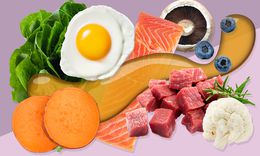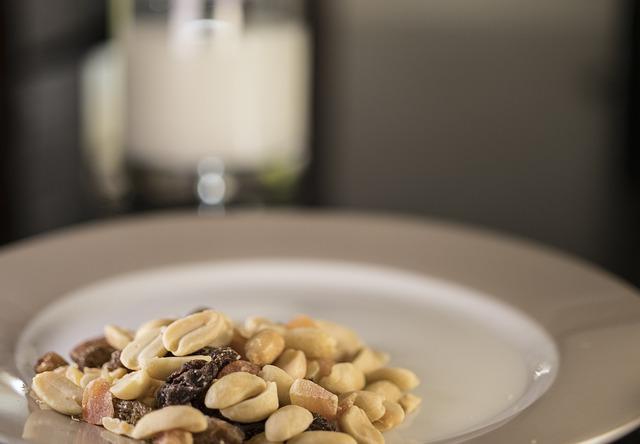
There are many benefits to a Paleo diet. A Paleo diet that is plant-based is low in cholesterol, saturated fats, and processed food. This type of diet is known as the Primal diet, which promotes good nutrition and healthy living. Foods made from processed food are also high-calorie and low in nutrients. Contrary, foods derived primarily from animal sources have high levels of nutrients and many benefits for your overall health.
Research into the health and benefits of the Paleo lifestyle
The Paleo diet is not perfect for everyone. It is not a failproof solution, but it can yield heart-healthy results if followed properly. As the name suggests, the Paleo diet eliminates processed foods, refined grains, added sugar, and alcohol, while including plenty of fruits, vegetables, and whole foods. For people with heart problems, it is best to avoid this diet.
Paleo can help improve your cardiovascular health. The results were evident within half a years and continued to improve for the next two-years. These results, although they may seem insignificant, are encouraging for people at high cardiovascular risk who might benefit from additional steps to keep their health. Additional benefits of the Paleo diet include lower cholesterol and a lower chance of developing type 2 diabetes.

Moreover, this diet eliminates the consumption of processed foods and refined fats. Paleo also helps to reduce weight. Research has shown that the Paleo diet can improve the health of those suffering from metabolic syndrome and type 2 diabetes. The benefits of this diet may be seen as soon as two weeks. Paleo-followers tend to be more committed to the diet than others.
Foods that are allowed in a Paleo diet
A diet that eliminates grains and processed foods is known to improve a person's health and lower cholesterol levels. Some people may have difficulty getting enough calories without giving up refined sugars. Paleo can help people with high cholesterol lose weight. Here are some of the foods that are allowed in a Paleo diet.
Paleo-style eating does not allow for certain foods that are healthy for the heart. These foods include butter, coconut oil and red meat. These foods have high levels of saturated fats and may increase the risk of heart disease. Many Paleo followers report that their meat and poultry are healthy. They do, however, contain plenty of omega-3 fats, which are important for heart health.
While the Paleo diet has become a popular choice, not all Paleo advocates it. Many mainstream nutritionists and professionals don't recommend this diet. This is why it is important to thoroughly research the evidence before making a decision on whether to continue with the plan. The paleo diet attempts to recreate the hunting-gatherer diet. That means eating unprocessed plant and animal foods - not refined sugars and flour. It also includes vegetables, fruits, nuts and fish, as well as lean proteins.
Ways to lower cholesterol on a Paleo diet

Paleo-style eating can help lower cholesterol. The Paleo diet cuts out processed grains, sugars and trans-fat while emphasizing fruits and vegetables. This type of diet has been shown in studies to reduce cholesterol, waist circumference and blood pressure. It can lower the likelihood of developing cardiovascular disease and type 2 diabetes. Remember to seek the advice of a doctor to ensure that the diet is the best for you.
Paleo doesn't ban dairy, but it does limit intake. While dairy is necessary for strong bones, it should be replaced with other sources of calcium. Your calories should be about one third from carbohydrates. The Paleo diet is low in carbs. It is not clear if this diet is safe for the heart.
Another way to lower cholesterol on a Paleo-style diet is to increase your exercise. It will temporarily raise cholesterol but is much better than eating a garbage-diet. As long as you make sure to eat plenty of lean protein and a moderate amount of fat, you should see improvements in your cholesterol levels. It is important to remember that too much of one or the other is unhealthy.
FAQ
What ingredients do I need to purchase to cook?
You don't have to buy all ingredients. Premade sauces can be found in most grocery stores. If you are looking to save money, premade meals may be a good option.
Where can I get free online cooking lessons
Numerous websites offer free cooking lessons. YouTube can be searched for videos showing you how to make different meals. Some sites offer thousands of recipe options. You will need to pay a monthly subscription, but you can still try the site for free for 30 day.
What are my options for learning about cooking?
You can find cooking classes all across the country. You can find courses in baking, pastry and wine tasting at many schools. You can take a class at your local vocational school or community college if you are interested in learning more about cooking.
What skills will I need to be able to go to culinary school?
A chef's job requires you to be able cook well under pressure and understand food safety regulations. To learn how to cook, you should take cooking classes at your local high school or community college. Once you've learned basic techniques, you'll need to find a job working for a restaurant or catering company.
How do you become a chef?
There are many avenues to become a professional chef. To start, you can take a course at your local community college. Next, consider attending culinary school. You can also apply for a paid internship.
Statistics
- You'll be amazed that over 90% of CIA students receive scholarships and grants to finish their culinary studies. (ischoolconnect.com)
- The median pay for a chef or head cook is $53,380 per year or $25.66/hour, according to the U.S. Bureau of Labor Statistics (BLS). (learnhowtobecome.org)
- under 10 Kids have been taught that there is special food just for them, and Fiese says that 10 percent of kids will throw a tantrum if they don't get the food they want. (washingtonpost.com)
External Links
How To
How to make a perfect omelet
Omelets are my favorite breakfast dish. But how do they turn out so perfectly? I've tried many different methods and recipes, but none of them seem to work! So I wanted to share some tips and tricks so that you can make delicious, fluffy omelets every morn.
Before we start making omelets, let's remember that eggs are temperamental. The eggs must be fresh from an organic source and kept at room temperature until they are ready to be cooked. You must keep them cool enough to allow the whites to form properly and the yolks to become too runny if they're not kept at the right temperature. This can make your omelets look bizarrely colored. If you're going to cook them immediately, it is best if the eggs are still warm.
Another tip is to separate each egg before adding them to the saucepan. It is important not to allow any white to mix with the yolk as this could lead to the omelet becoming curdled.
The bottom part of an egg that is added directly to the stovetop might be burned, which could cause a ruined texture in your omelet. Instead, put the egg in the microwave for 10 seconds before putting it into the pan. The microwave heat cooks your egg just right, without it becoming too soft.
Next, let's discuss mixing the eggs. You want to mix the eggs thoroughly before you add them. You need to turn the bowl of the mixer upside down. Then shake the bowl vigorously. This allows the air to be whipped and the egg to be mixed thoroughly.
Now comes the fun part - pouring the milk into the mixture. Pour half the milk into the beaten egg mixture and then fold in the eggs. Don't worry if there are still streaks of egg visible; these streaks will disappear once you flip the omelet.
After folding the eggs, place the pan on medium heat and wait for the oil to start sizzling. Once the oil begins to heat, add 1/4 cup butter and swirl the pan to coat it. Open the lid and sprinkle salt on the pan. An additional pinch of salt will prevent the omelet form sticking to your pan.
Once the omelet has formed, cover the pan again and wait for the top side to set completely. Flip the omelet by using a spatula. Cook the opposite side for another minute. Serve the omelet immediately by removing it from the pan.
This recipe works best when you use whole milk.